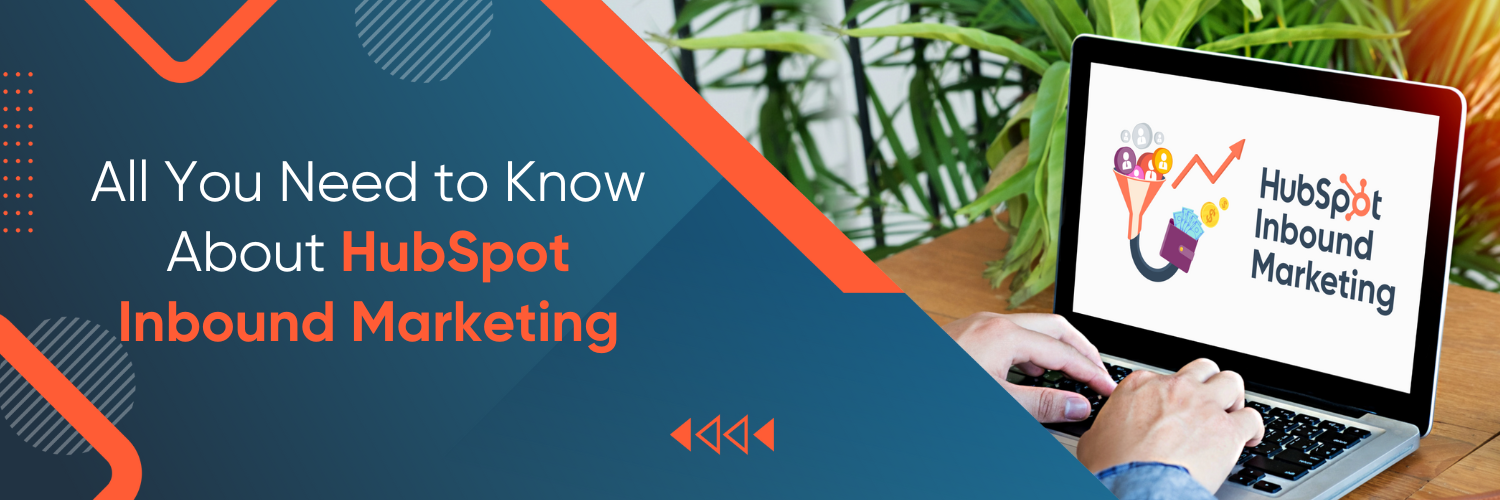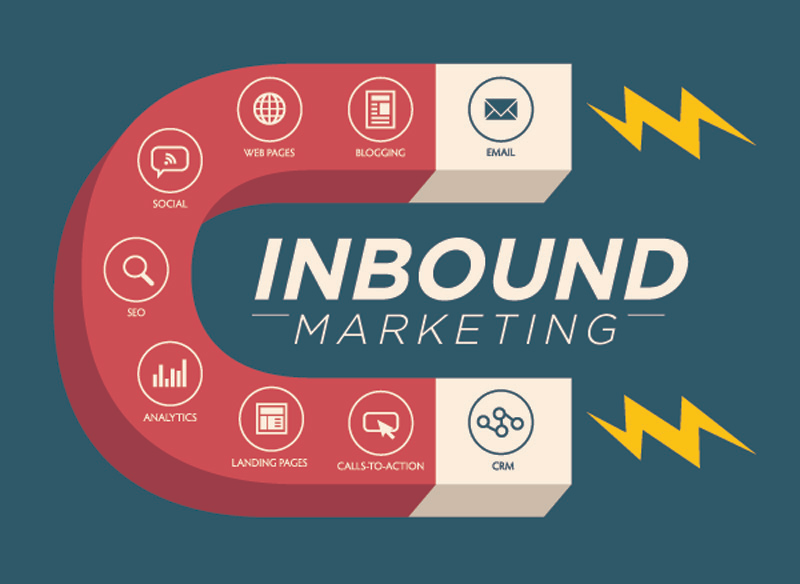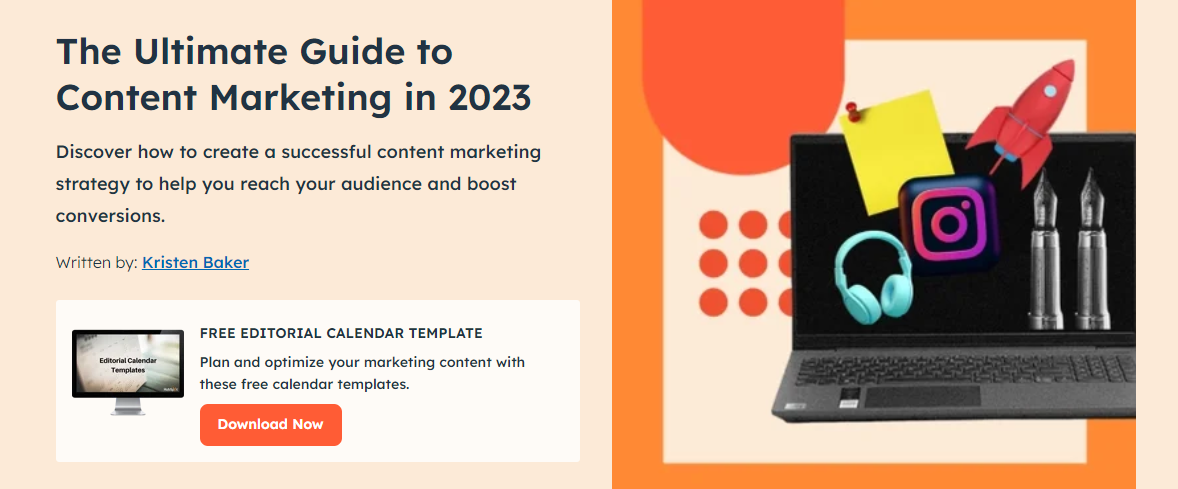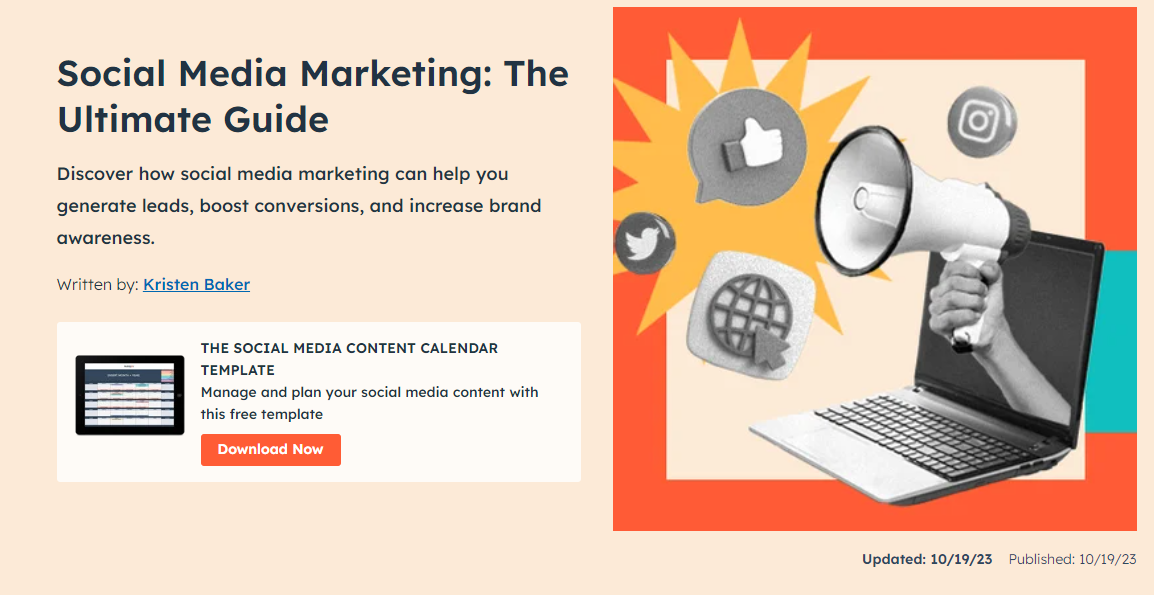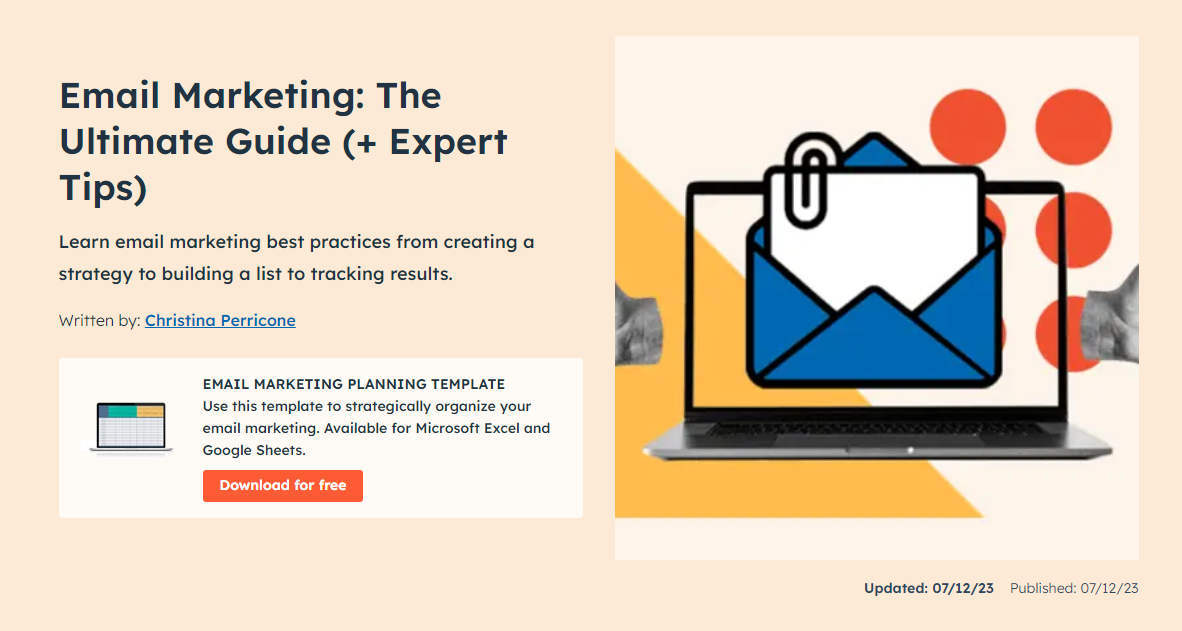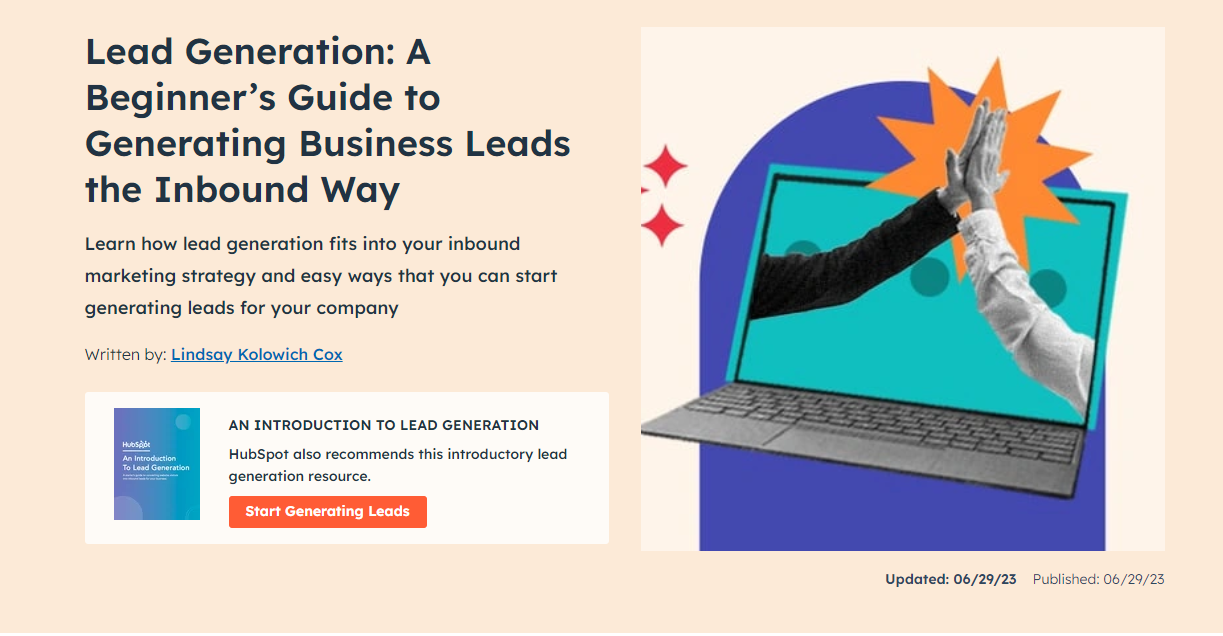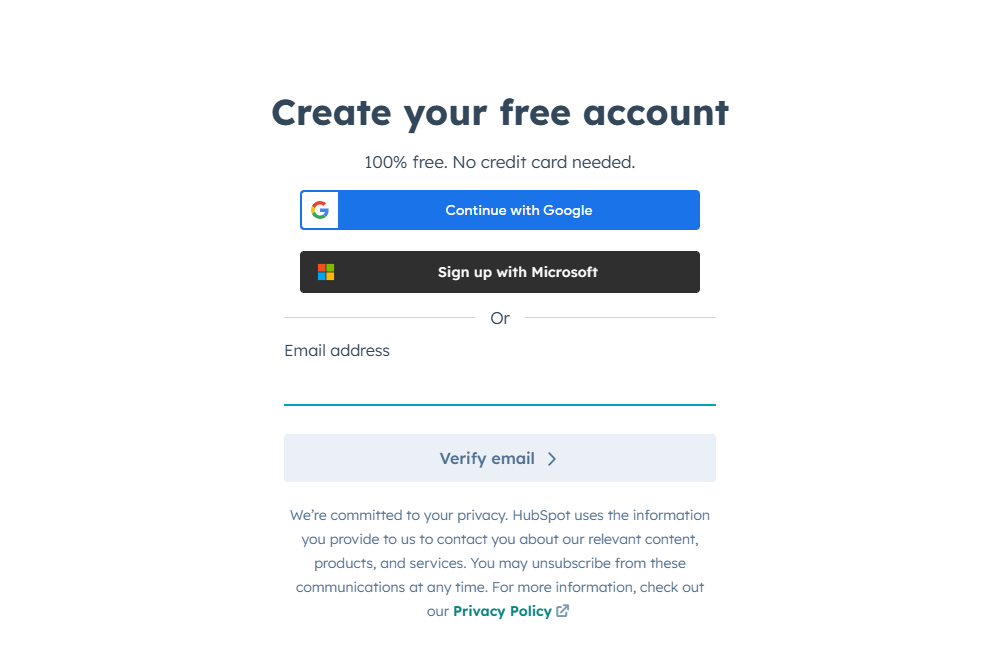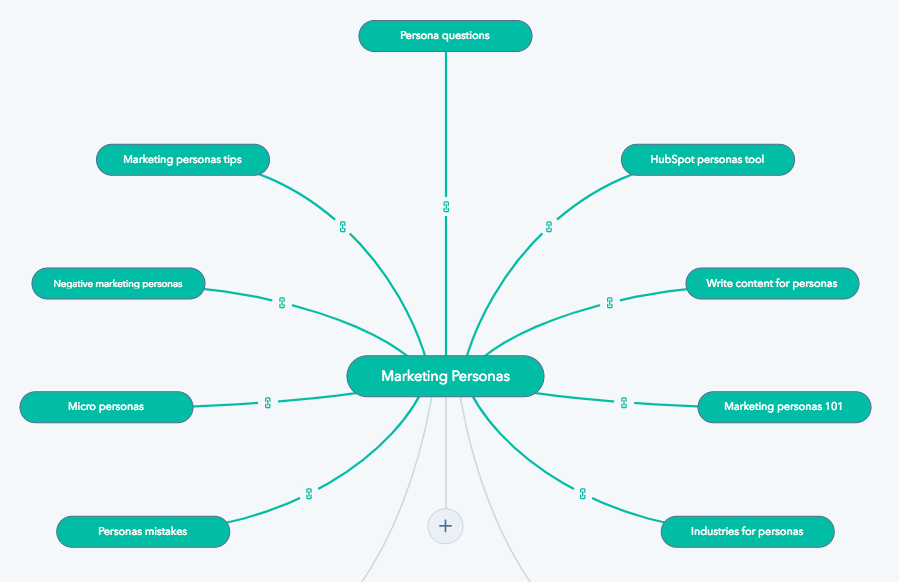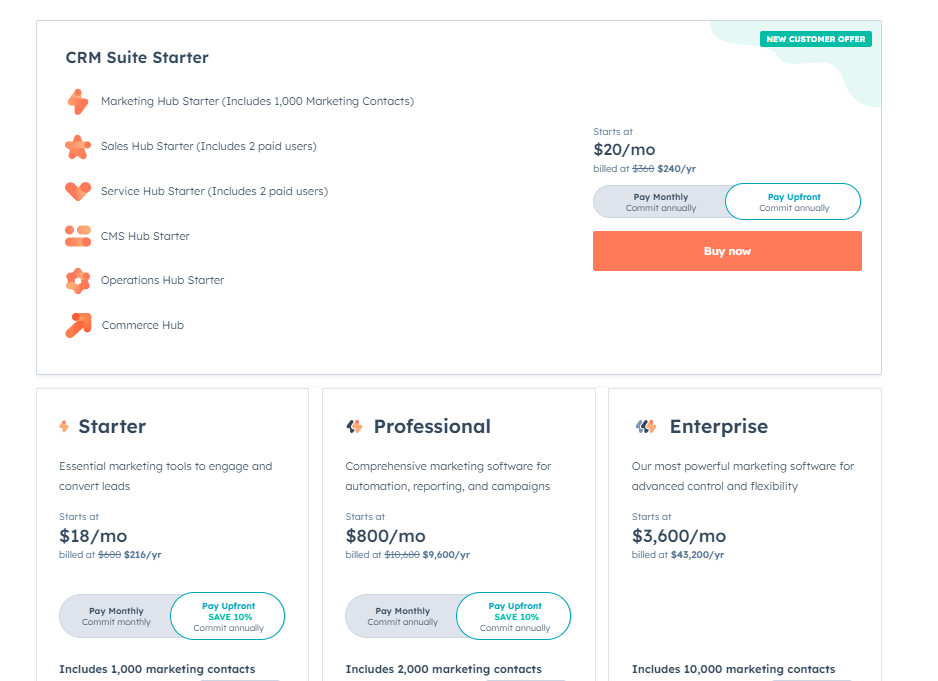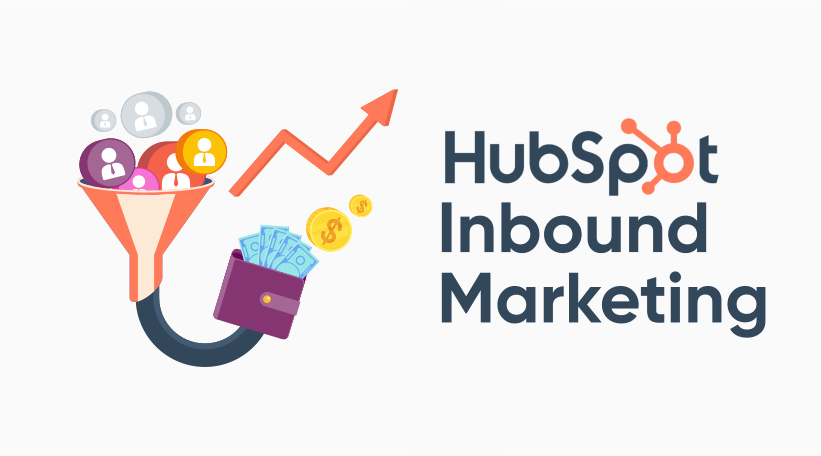What is Inbound Marketing?
Inbound Marketing is a customer-centric strategy focusing on attracting and engaging potential customers through valuable content and interactions. Unlike traditional outbound marketing, which interrupts audiences with advertisements, Inbound Marketing aims to provide solutions to problems and answer questions that consumers are actively seeking. It’s about being helpful, and informative, and building trust with your target audience.
Why is Inbound Marketing Important?
Inbound Marketing is vital because it aligns with how modern consumers make purchasing decisions. In today’s digital age, people have access to an abundance of information, and they prefer to research products and services independently before making a buying decision. Inbound Marketing allows businesses to be present during this research phase, providing the information and assistance that potential customers are looking for. By delivering valuable content and building relationships, businesses can position themselves as trusted authorities in their respective industries.
The Role of HubSpot in Inbound Marketing
HubSpot is a leading inbound marketing and sales platform that has revolutionized the way businesses attract, engage, and delight customers. Founded in 2006, HubSpot offers a comprehensive suite of tools and features designed to streamline the Inbound Marketing process.
With HubSpot, businesses can create and manage content, nurture leads, automate marketing workflows, and gain valuable insights through analytics. The platform integrates seamlessly with customer relationship management (CRM) systems, enabling a unified approach to marketing and sales.
In this guide, we will explore the world of HubSpot Inbound Marketing in detail, delving into its key features, benefits, best practices, success stories, pricing options, and more. Whether you’re new to Inbound Marketing or looking to optimise your existing strategy, you’ll find valuable insights and practical advice to help you succeed in the digital marketing landscape. So, let’s dive in and discover everything you need to know about HubSpot Inbound Marketing.
Key Features of HubSpot Inbound Marketing
HubSpot Inbound Marketing is a multifaceted approach that empowers businesses to attract, engage, and convert customers effectively.
To achieve these goals, HubSpot offers a range of powerful features that enable you to implement Inbound Marketing strategies with precision and efficiency.
Let’s explore these key features in detail:
Source: HubSpot
Content Marketing with HubSpot
Content is the cornerstone of Inbound Marketing, and HubSpot provides a robust suite of tools to help you create, optimize, and distribute content seamlessly. With HubSpot, you can:
- Create Compelling Content: HubSpot offers a user-friendly content editor that allows you to create blog posts, web pages, and emails effortlessly. You can format text, add images, embed videos, and optimize content for search engines.
- Content Calendar: Keep your content strategy organized with the content calendar. Schedule posts, track deadlines, and ensure a consistent flow of content to engage your audience.
- SEO Optimization: HubSpot’s built-in SEO tools help you optimize your content for search engines. You can conduct keyword research, track rankings, and receive recommendations to improve your content’s visibility.
Social Media Marketing with HubSpot
Source: HubSpot
Managing multiple social media platforms can be a daunting task, but HubSpot simplifies the process:
- Social Media Publishing: Schedule and publish social media posts across different platforms from a single dashboard. You can also preview posts and optimize content for each network.
- Monitoring and Engagement: Monitor your social media performance and engage with your audience directly within HubSpot. Respond to comments, mentions, and messages efficiently.
- Social Media Analytics: Gain insights into the effectiveness of your social media campaigns. HubSpot’s analytics provide data on engagement, reach, and clicks to help you refine your social strategy.
Email Marketing with HubSpot
Source: HubSpot
Email remains a powerful channel for nurturing leads and engaging with customers. HubSpot’s email marketing features include:
- Email Campaigns: Create and send personalized email campaigns to segmented lists of contacts. You can design emails with templates, track opens and clicks, and automate follow-up sequences.
- Marketing Automation: Implement automated email workflows that trigger based on user behaviour, such as website visits or form submissions. This allows you to deliver timely and relevant content to leads and customers.
Lead Generation and Conversion
HubSpot offers tools to capture and nurture leads effectively:
- Forms and Landing Pages: Easily create custom forms and landing pages to capture lead information. Customize form fields, add progressive profiling, and track conversion rates.
- CTAs (Calls to Action): Design eye-catching CTAs that prompt visitors to take specific actions, such as downloading a resource or signing up for a newsletter.
Marketing Automation
Automation is at the heart of Inbound Marketing, and HubSpot streamlines processes:
- Workflows: Build automated workflows that trigger actions based on user behaviour, demographics, and interactions. Nurture leads, score them, and send targeted content.
- Lead Scoring: Assign scores to leads based on their engagement with your content and website. Identify hot leads that are ready for sales outreach.
Benefits of Using HubSpot for Inbound Marketing
Source: HubSpot
Improved Lead Generation
With HubSpot, you can generate high-quality leads through inbound strategies, helping you reach the right audience and increase conversion rates.
Enhanced Customer Relationship Management
HubSpot’s CRM system allows you to manage and nurture customer relationships efficiently, ensuring you provide a personalized experience throughout the buyer’s journey.
Data Analytics and Reporting
HubSpot provides robust analytics and reporting features, giving you insights into the performance of your marketing campaigns. You can measure ROI and make data-driven decisions to optimize your strategies.
Getting Started with HubSpot Inbound Marketing
Now that we’ve explored the key features of HubSpot Inbound Marketing, it’s time to roll up your sleeves and get started on your journey to attracting, engaging, and converting customers effectively.
In this section, we’ll guide you through the essential steps to kickstart your HubSpot Inbound Marketing strategy.
Setting up a HubSpot Account
Getting started with HubSpot is a straightforward process, and it begins with setting up your account:
- Sign Up: Visit the HubSpot website and sign up for an account. You can choose from various plans, including free options for small businesses and startups.
- Account Configuration: Once you’ve created your account, you’ll need to configure your settings. This includes entering basic company information and customizing your account preferences.
- Integrate Your Website: To fully leverage HubSpot’s capabilities, you’ll want to integrate your website with the platform. HubSpot provides plugins and instructions for popular content management systems (CMS) like WordPress.
- Import Contacts: If you have an existing list of contacts, you can import them into HubSpot. This is a crucial step for managing and nurturing your leads.
Creating and Managing Content
Content is at the heart of Inbound Marketing. HubSpot simplifies content creation and management:
- Content Editor: Use HubSpot’s intuitive content editor to create blog posts, web pages, and emails. You can format text, insert images and videos, and optimize content for search engines.
- Content Calendar: Plan your content strategy effectively with HubSpot’s content calendar. Schedule posts set deadlines, and maintain a consistent content publishing schedule.
- SEO Optimisation: HubSpot offers built-in SEO tools to help you optimize your content for search engines. Conduct keyword research, track rankings, and receive recommendations for improving your content’s visibility.
Building Landing Pages and Forms
Landing pages and forms are critical for lead generation and conversion:
- Landing Page Builder: Create compelling landing pages tailored to your specific offers or campaigns. Customise form fields, add eye-catching visuals, and provide persuasive copy that encourages visitors to take action.
- Forms: HubSpot’s form builder allows you to create custom forms for your landing pages. Collect essential lead information and implement progressive profiling to gather additional data over time.
Implementing Email Campaigns
Email marketing remains a powerful tool for nurturing leads and engaging with your audience:
- Email Campaigns: Design and send personalized email campaigns to segmented lists of contacts. Utilize email templates, track open and click-through rates, and automate follow-up sequences.
- Marketing Automation: Implement automated email workflows that trigger based on user behaviour. For example, you can set up workflows to send welcome emails, nurture leads, or re-engage inactive contacts.
Tracking and Analyzing Performance
To optimise your Inbound Marketing efforts, you must continually measure and analyze performance:
- Analytics Dashboard: HubSpot provides an analytics dashboard where you can monitor the performance of your marketing campaigns. Track website visits, conversion rates, email engagement, and more.
- Reports: Generate reports to gain insights into the effectiveness of your strategies. Identify which campaigns are driving the most leads and conversions, allowing you to allocate resources wisely.
- A/B Testing: Experiment with different elements of your campaigns, such as subject lines, content, and visuals. A/B testing helps you refine your approach and improve results over time.
HubSpot Inbound Marketing Best Practices
Creating a Content Strategy
A well-defined content strategy is the bedrock of your Inbound Marketing efforts. Here’s how to develop a content plan that resonates with your audience and drives results:
- Audience Research: Start by understanding your target audience. Who are they? What are their pain points, interests, and preferences? Create buyer personas to guide your content creation process.
- Content Mapping: Map out your content to align with the various stages of the buyer’s journey—awareness, consideration, and decision. Tailor your content to address the specific needs of prospects at each stage.
- Keyword Research: Use HubSpot’s SEO tools to conduct keyword research. Identify relevant keywords and phrases that your audience is searching for. Incorporate these keywords strategically into your content.
- Content Calendar: Develop a content calendar that outlines when and where you’ll publish content. Consistency is key in Inbound Marketing, so plan your blog posts, social media updates, and email campaigns.
- Diverse Content Types: Don’t limit yourself to just blog posts. Experiment with a variety of content types such as videos, infographics, webinars, and eBooks to cater to different audience preferences.
- Quality Over Quantity: While consistency is important, prioritize the quality of your content. Create informative, valuable, and engaging content that truly addresses your audience’s pain points.
- Measure and Adjust: Use HubSpot’s analytics to measure the performance of your content. Track metrics like website visits, lead conversions, and engagement. Adjust your content strategy based on what works best.
Leveraging SEO with HubSpot
Optimizing your content for search engines is essential to increase organic traffic to your website. Here’s how HubSpot can help:
- On-Page SEO: HubSpot provides on-page SEO recommendations as you create content. It suggests keyword placement, meta tags, and other optimizations to improve your search engine rankings.
- Content Strategy Tool: HubSpot’s Content Strategy tool allows you to identify content gaps and opportunities. It helps you prioritize content creation to target high-impact keywords.
- Blogging Tools: Utilize HubSpot’s blogging tools to optimize your blog posts for SEO easily. It provides suggestions for keyword usage, header structure, and more.
- Monitoring and Reporting: Track your keyword rankings and organic search traffic within HubSpot. Monitor the effectiveness of your SEO efforts and make necessary adjustments.
Nurturing Leads and Customer Engagement
Effective lead nurturing is the key to converting leads into loyal customers. Here are best practices for keeping your audience engaged and moving through the sales funnel:
- Segmentation: Use HubSpot’s segmentation tools to categorize leads based on their interests, behaviour, and demographics. Tailor your communication to each segment for more personalized engagement.
- Lead Scoring: Implement lead scoring to identify the most engaged and sales-ready leads. HubSpot’s lead scoring system allows you to prioritize your outreach efforts.
- Email Workflows: Set up automated email workflows in HubSpot to nurture leads with relevant content. Send personalized emails based on lead behaviour and preferences.
- Lead Nurturing Content: Develop lead nurturing content, such as educational emails, webinars, and whitepapers. Provide value and guide leads through their decision-making process.
- Social Media Engagement: Use HubSpot to monitor social media interactions and engage with your audience. Respond to comments, answer questions, and foster a sense of community.
- Progressive Profiling: Implement progressive profiling in your forms to gather more information from leads over time. This helps you tailor your communication further.
A/B Testing and Optimisation
Continuous improvement is vital in Inbound Marketing. Here’s how to conduct A/B tests and optimize your campaigns for better results:
- Identify Variables: Determine what you want to test—email subject lines, landing page designs, CTAs, or content variations. Define clear hypotheses for your tests.
- Split Testing: Create variations of your content within HubSpot and divide your audience into test groups. Monitor performance metrics to identify the winning variation.
- Iterate and Scale: Once you’ve identified successful strategies through A/B testing, apply these insights to future campaigns. Continuously iterate and refine your approach based on data.
HubSpot Inbound Marketing Pricing
Different HubSpot Plans
HubSpot offers a range of plans to accommodate businesses of varying sizes and needs. Let’s take a closer look at these plans and their features:
1. HubSpot Free Plan:
- Cost: This plan is free and provides essential tools for startups and small businesses.
- Features: It includes contact and lead management, email marketing, live chat, and basic reporting. It’s an excellent starting point for businesses on a tight budget.
2. HubSpot Starter Plan:
- Cost: The Starter Plan is designed for growing businesses and starts at a competitive monthly fee.
- Features: It includes all the features of the Free Plan, plus additional tools like forms, pop-up forms, and ad management. You can also access more advanced reporting features.
3. HubSpot Professional Plan:
- Cost: The Professional Plan is a comprehensive solution for mid-sized businesses and starts at a higher monthly cost.
- Features: It offers all the features of the Starter Plan and adds marketing automation, A/B testing, and goal-based nurturing. You also gain access to advanced analytics and CRM customization.
4. HubSpot Enterprise Plan:
- Cost: The Enterprise Plan is a top-tier offering and is designed for larger enterprises. Pricing varies depending on the scale of your operations.
- Features: In addition to the features of the Professional Plan, the Enterprise Plan includes advanced automation workflows, predictive lead scoring, multi-touch revenue attribution, and more. It’s suitable for businesses with complex marketing needs.
It’s important to note that HubSpot also offers additional solutions like Sales Hub, Service Hub, and CMS Hub, which can be added to any plan for an extra cost. These solutions cater to sales, customer service, and website management, respectively.
Pricing Structure and Comparison
HubSpot offers flexible pricing structures to cater to your business preferences:
- Monthly Billing: Pay every month, allowing for flexibility and scalability.
- Annual Billing: Commit to an annual plan and receive a discount compared to monthly billing.
The choice between monthly and annual billing depends on your budget and long-term strategy. Annual billing typically offers cost savings, making it a popular choice for businesses planning to use HubSpot for an extended period.
When comparing plans, consider factors such as the number of contacts you’ll be managing, the complexity of your marketing automation needs, and your desire for advanced features like A/B testing and predictive lead scoring.
Choosing the Right Plan for Your Business
Selecting the ideal HubSpot plan for your business can be a critical decision. Here are some steps to help you evaluate your requirements and make an informed choice:
- Assess Your Budget: Determine your budget for Inbound Marketing. Consider both your immediate budget constraints and your long-term growth plans.
- Define Your Goals: Clearly outline your marketing objectives. Are you looking to generate leads, increase sales, or improve customer engagement? Different plans offer varying degrees of support for these goals.
- Estimate Contact Volume: Estimate the number of contacts you’ll be managing in your HubSpot account. Ensure that your chosen plan accommodates your contact list size without overstretching your budget.
- Evaluate Feature Needs: Review the features and tools you require for your marketing campaigns. Prioritize the features that align with your goals.
- Consider Growth: Think about your business’s growth trajectory. Choose a plan that can scale with your evolving needs without necessitating a disruptive upgrade.
- Consult with HubSpot or HubSpot Partner: HubSpot’s sales and support teams can provide guidance based on your specific requirements. Reach out to them for personalized assistance. Ubique Digital Solutions, a Platinum HubSpot Partner, can help you boost your business and drive substantial growth.
Partner with Ubique Digital Solutions
With HubSpot’s arsenal of tools and the expertise you’ve acquired, you’re well-equipped to thrive in the ever-evolving digital marketing landscape. But why embark on this journey alone when you can have a trusted partner by your side?
Don’t wait to take action—partner with Ubique Digital Solutions today and supercharge your business’s journey to success. Stay ahead of the competition, harness the full potential of Inbound Marketing with HubSpot, and achieve meaningful results. Contact us now and let’s create a winning strategy together. Your success is our mission.
FAQs
Q: What is the difference between inbound marketing and outbound marketing?
Inbound Marketing attracts customers through valuable content, while Outbound Marketing initiates contact through methods like advertising and cold calling.
Q: Can I use HubSpot Inbound Marketing for a small business?
Yes, HubSpot Inbound Marketing is suitable for small businesses, offering scalable tools like website building, content creation, and lead nurturing.
Q: Is HubSpot Inbound Marketing suitable for B2B companies?
Yes, HubSpot Inbound Marketing is suitable for B2B companies, providing tools for content creation, lead generation, and relationship-building.
Q: How does HubSpot’s Marketing Automation work?
HubSpot’s Marketing Automation automates repetitive tasks, nurtures leads, and tracks customer interactions, streamlining marketing efforts for efficiency and effectiveness.
Q: Are there any alternatives to HubSpot for Inbound Marketing?
Yes, there are alternatives to HubSpot for Inbound Marketing, including platforms like Marketo, Pardot, and ActiveCampaign, each with its own set of features and strengths.
